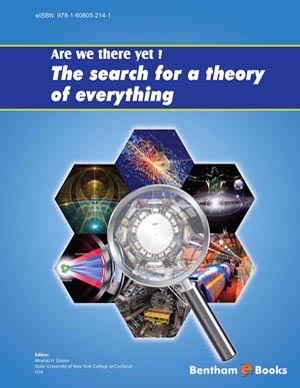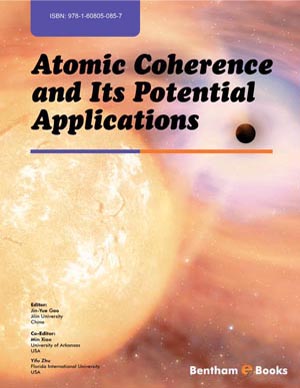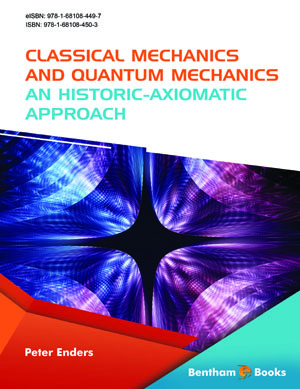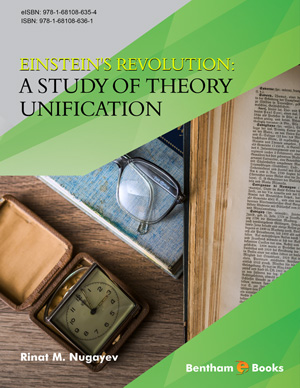Book Volume 3
An Introduction to the Lattice Boltzmann Method for Coupled Problems
Page: 3-30 (28)
Author: Daniel Heubes, Andreas Bartel and Matthias Ehrhardt
DOI: 10.2174/9781608057160113030004
PDF Price: $30
Abstract
The first part of this introduction is devoted to the known derivation of the lattice Boltzmann method (LBM): We track two different derivations, a historical one (via lattice gas automata) and a theoretical version (via a discretization of the Boltzmann equation). Thereby the collision term is approximated with a single relaxation time model (BGK) and we motivate the introduction of this common approximation. By applying a multiscale expansion (Chapman-Enskog), the solution of the numerical method is verified as a meaningful approximation of the solution of the Navier-Stokes equations. To state a well posed problem, common boundary conditions are introduced and their realization within a LBM is discussed.
In the second part, the LBM is extended to handle coupled problems. Four cases are investigated: (i) multiphase and multicomponent flow, (ii) additional forces, (iii) the coupling to heat transport, (iv) coupling of electric circuits with power dissipation (as heat) and heat transport.
Add-ons for Lattice Boltzmann Methods: Regularization, Filtering and Limiters
Page: 31-52 (22)
Author: Robert A. Brownlee, Jeremy Levesley, David Packwood and Alexander N. Gorban
DOI: 10.2174/9781608057160113030005
PDF Price: $30
Abstract
We describe how regularization of lattice Boltzmann methods can be achieved by modifying dissipation. Classes of techniques used to try to improve regularization of LBMs include flux limiters, enforcing the exact correct production of entropy and manipulating non-hydrodynamic modes of the system in relaxation. Each of these techniques corresponds to an additional modification of dissipation compared with the standard LBGK model. Using some standard 1D and 2D benchmarks including the shock tube and lid driven cavity, we explore the effectiveness of these classes of methods.
Discrete-Velocity Models and Lattice Boltzmann Methods for Convection-Radiation Problems
Page: 53-90 (38)
Author: Mapundi K. Banda and Mohammed Seaid
DOI: 10.2174/9781608057160113030006
PDF Price: $30
Abstract
Discrete-velocity models and lattice Boltzmann methods are presented for solving convection-radiation effects in thermal fluid flows. The discrete-velocity equations are derived from the continuous Boltzmann equation with appropriate scaling suitable for incompressible flows. The radiative heat flux in the energy equation is obtained using the discrete-ordinates solution of the radiative transfer equation. This chapter is structured in two parts. In the first part we investigate the derivation of the discrete-velocity models and we perform an asymptotic analysis to show at the leading order, the macroscopic models are recovered from these discrete-velocity models. In this part we also formulate the lattice Boltzmann method for solving the convection-radiation problems. The second part of this chapter is devoted to the computational aspects of the considered models. Consistent boundary and initial conditions in the lattice Boltzmann models are also discussed in this part. Numerical results are presented for several test examples on coupled convectionradiation flows in two dimensional enclosures. Detailed simulation results at different flow and radiative regimes, as well as benchmark solutions, are also presented and discussed. The obtained results show that the developed models are competitive tools for convectionradiation problems.
Asymptotic Analysis of Lattice Boltzmann Methods for Flow-Rigid Body Interaction
Page: 91-126 (36)
Author: Alfonso Caiazzo and Michael Junk
DOI: 10.2174/9781608057160113030007
PDF Price: $30
Abstract
In this chapter we perform a detailed asymptotic analysis of different numerical schemes for the interaction between an incompressible fluid and a rigid structure within a lattice Boltzmann (LB) framework. After introducing the basic ideas and the main tools for asymptotic analysis of bulk LBM and boundary conditions [19, 21], we concentrate on moving boundary LB schemes. In particular, we investigate in detail the initialization of new fluid nodes created by the variations of the computational fluid domain, when a solid objects moves through a fixed computational grid. We discuss and analyze the equilibrium-non equilibrium (EnE) refill algorithm [6], reporting comparisons with other methods, based on numerical and theoretical considerations. Secondly, we focus on force computation through the Momentum Exchange Algorithm (MEA). Starting from the original scheme (as proposed in [30]), we introduce a correction which, motivated by the analysis, improves Galilean invariance properties of the force computation [5, 7, 32]. Moreover, precise accuracy estimates for the force computation are derived. Our analysis yields first order accuracy of the global force computation, while it shows that the classical MEA is not suitable for accurate local forces evaluation. This problem is fixed with the proposed modification, providing a detailed proof of the accuracy results.
Numerical Lifting for Lattice Boltzmann Models
Page: 127-154 (28)
Author: Ynte Vanderhoydonc, Wim Vanroose, Christophe Vandekerckhove, Pieter Van Leemput and Dirk Roose
DOI: 10.2174/9781608057160113030008
PDF Price: $30
Abstract
In this chapter we give an overview of various lifting strategies for lattice Boltzmann models (LBMs). A lifting operator finds for a given macroscopic variable the corresponding distribution functions, mesoscopic variables of the lattice Boltzmann model. This is, for example, useful in coupled LBM and partial differential equation (PDE) models, where one part of the domain is described by a macroscopic PDE while another part is modeled by a LBM. Such a hybrid coupling results in missing data at the interfaces between the different models. The lifting operator provides the correct boundary conditions for the LBM domain at the interfaces. We discuss the accuracy, computational cost and convergence rate of some analytical and numerical lifting procedures.
A Multiscale Lattice Boltzmann Method for Reaction-Diffusion Processes in Chemically and Physically Heterogeneous Environments
Page: 155-183 (29)
Author: Davide Alemani
DOI: 10.2174/9781608057160113030009
PDF Price: $30
Abstract
A recent Lattice Boltzmann (LB) method applied to diffusion-reaction processes for chemical and environmental applications is shown, in particular to physicochemical processes that take place in environmental systems, such as aquatic systems, porous media, sediment, soils and biofilm layers on inert substrates. The inherently multi-scale problem in space and time of such types of applications has been investigated via the combination of two techniques, the time splitting and the grid refinement methods. We will describe in detail how the two techniques have been combined to produce a new numerical method that has been implemented in the computer program MHEDYN. Recent results on metal flux (biouptake) and dynamic speciation at bio-interface in ligand mixtures will be presented, specifically on the roles of simple, fulvic and aggregate complexes on metal of particular interest for their ecotoxicology in freshwater ligand mixtures at planar consuming interfaces. Furthermore, the role of Michaelis-Menten boundary condition at consuming interface will be pointed out under specific conditions. Further extension of the model to biofilm with the inclusion of convection driven by chemical gradient will be discussed.
A Lattice Boltzmann Method for Coupled Fluid Flow, Solute Transport, and Chemical Reaction
Page: 184-198 (15)
Author: Qinjun Kang and Peter C. Lichtner
DOI: 10.2174/9781608057160113030010
Abstract
In this chapter we present a lattice Boltzmann method (LBM) for modeling coupled fluid flow, solute transport, and chemical reaction at a fundamental scale where the flow is governed by continuum fluid equations. Our numerical model accounts for multiple processes, including fluid flow, diffusion and advection of species, ion-exchange and mineral precipitation/dissolution reactions, as well as the evolution of pore geometry due to dissolution/precipitation. Homogeneous reactions are described either kinetically or through local equilibrium mass action relations. Heterogeneous reactions are incorporated into the LBM through boundary conditions imposed at the mineral surface. The LBM can provide detailed information on local fields, such as fluid velocities, solute concentrations, mineral compositions and amounts, as well as the evolution of pore geometry due to chemical reactions. Simulation examples include flow in a channel coupled with different reactions (linear kinetics for a single component, nonlinear kinetics for multi-components, and ion exchange reaction with constant Kd), crystal growth from supersaturated solution, and injection of CO2 into a limestone rock.
A Lattice Boltzmann Approach for Distributed Three-dimensional Fluid- Structure Interaction
Page: 199-216 (18)
Author: Sebastian Geller, Christian Janssen and Manfred Krafczyk
DOI: 10.2174/9781608057160113030011
PDF Price: $30
Abstract
This work investigated the validity and efficiency of the coupling of the Lattice Boltzmann method with finite element schemes as well as rigid body approaches to model fluid-structure interaction (FSI). The results on two- and three-dimensional benchmark configurations are very promising and show that an explicit coupling scheme is able to produce accurate results which agree with reference solutions very well. The underlying fluid solver VIRTUALFLUIDS is based on adaptive hierarchical grids and component technology for parallelization. One target application is the simulation of a jet induced by a ship propeller which poses a substantial challenge to both the numerical scheme as well as to the software parallelization concept. Furthermore, the coupling to a rigid body dynamics engine (PhysicsEngine-pe) leads to the possibility to compute FSI problems with a huge number of particles which is the basis for numerical simulations in geothermal drilling, where the particles eroded by the drill head influence the fluid dynamics. A free surface Lattice Boltzmann approach coupled with rigid body motions shows further potential and demonstrates the broad applicability of the developed algorithms.
Lattice Boltzmann Method for MILD Oxy-fuel Combustion Research: A Potential Powerful Tool Responding to the Man-made GlobalWarming
Page: 217-267 (51)
Author: Sheng Chen
DOI: 10.2174/9781608057160113030012
PDF Price: $30
Abstract
The subject of this chapter concerns the numerical simulation/modeling of multicomponent combustion under MILD oxy-fuel operation by the lattice Boltzmann method (LBM) to deepen our understanding on this novel combustion technology and improve related methodologies, which represents a significant challenge in the combustion community to respond to the man-made global warming. The main objective is to demonstrate the opportunities to build a new modeling framework to accelerate scientific discovery in this topic by utilizing unique features of the LBM and indicate the challenges that we should overcome since until recently the LBM could not be employed in such research due to combustion’s inherent complexity. The relevant preliminary explorations, including that by the present author, are reviewed. Further development of the methodology would not only provide the basis for a new platform to accelerated scientific research in combustion science, but also significantly push back the limits of LBM in general.
Introduction
Progress in Computational Physics is an e-book series devoted to recent research trends in computational physics. It contains chapters contributed by outstanding experts of modeling of physical problems. The series focuses on interdisciplinary computational perspectives of current physical challenges, new numerical techniques for the solution of mathematical wave equations and describes certain real-world applications. With the help of powerful computers and sophisticated methods of numerical mathematics it is possible to simulate many ultramodern devices, e.g. photonic crystals structures, semiconductor nanostructures or fuel cell stacks devices, thus preventing expensive and longstanding design and optimization in the laboratories. In this book series, research manuscripts are shortened as single chapters and focus on one hot topic per volume. Engineers, physicists, meteorologists, etc. and applied mathematicians can benefit from the series content. Readers will get a deep and active insight into state-of-the art modeling and simulation techniques of ultra-modern devices and problems. The third volume - Novel Trends in Lattice Boltzmann Methods - Reactive Flow, Physicochemical Transport and Fluid-Structure Interaction - contains 09 chapters devoted to mathematical analysis of different issues related to the lattice Boltzmann methods, advanced numerical techniques for physico-chemical flows, fluid structure interaction and practical applications of these phenomena to real world problems.








.jpg)




